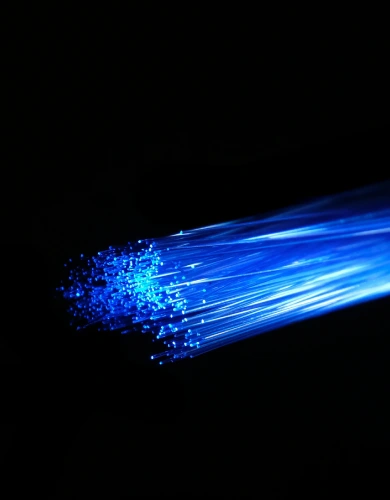GFast Broadband | What happened to it?
2.7 million homes in the UK have access to a GFast fibre-optic broadband connection. GFast technology is excellent and boosts the speed of fibre broadband to a respectable 350Mbps.
However, GFast broadband can be considered the minidisc of the broadband world. A great technology that was replaced with something better. In the world of broadband, full fibre offers the way forward for ultra-fast broadband connections.
Let’s explore what happened to GFast broadband.
What is GFast Broadband?
GFast is an acronym for G-Series, Fast Access to Subscriber Terminals.
GFast is similar to standard fibre optic broadband, using fibre-optic cables to a local street cabinet (a green Openreach box in your street). The difference with GFast is how the connection travels through the copper cable phone lines into nearby homes.
GFast uses a higher frequency range of signal (106-212MHz) to deliver faster speeds than a standard FTTC connection. GFast technology increases the maximum business broadband speed on a fibre broadband connection to 350Mbps.
GFast Broadband rollout
Local trials of GFast by Openreach (part of the BT business broadband group) in Cambridgeshire, Gosforth and South Wales demonstrated that the technology could provide much faster, reliable broadband speeds.
In 2017, Openreach announced its intention to roll out GFast broadband to 12 million UK homes over three years.
Fast-forward three years later, Openreach had only made the GFast technology available to 2.7 million homes and announced that there are no further intentions to increase GFast network coverage.
Openreach’s scale back of GFast is due to a shift in focus to full fibre business broadband. Full fibre technology (where fibre-optic cables are used all the way to your router) offers much higher maximum speeds.
The announcement of a nationwide full fibre rollout in 2019 effectively stopped the future expansion of GFast. At the end of 2021, 8 million homes were full-fibre ready, and Openreach is currently working on reaching 25 million premises by the end of 2026.
How fast is GFast broadband?
In terms of maximum speeds offered, here’s how GFast compares to the other broadband connections:
ADSL broadband – 24Mbps
SoGEA broadband – 80Mbps
GFast – 350Mbps
Cable Broadband – 1,000 Mbps
Full fibre – 1,000 Mbps
Leased line broadband – 10,000 Mbps
The speed of a GFast connection depends on how near your home is to your local cabinet. The further GFast has to travel through a copper phone line cable, the worse the speed will be.
The headline figure of 350Mbps is only possible if you’re within 100 metres of the cabinet in your street. At 500 metres out from the cabinet, upgrading to a GFast connection will likely be pointless as the signal will likely be worse than a standard FTTC fibre optic business broadband connection.
Problems with GFast broadband
Here’s a summary of the two main issues with GFast that explain why it’s being replaced by full fibre technology:
Limited reach – The speed available on a GFast fibre connection drops significantly with the distance the connection needs to travel along a business phone line cable. This limitation effectively rules out about 50% of all properties from GFast because they are not close enough to an Openreach cabinet.
Speed – Although the GFast network offers significantly higher speeds than a standard FTTC fibre connection, its maximum speed is still 3x slower than a full fibre connection. This speed is important in a world of 4K TV and smart toasters.
GFast business broadband providers
The GFast connection has become quite a niche proposition, with only certain providers providing this service due to its limited reach.
Here’s our list of business broadband providers offering GFast business broadband deals:
- Amvia
- BT business broadband
- Cerberusnetworks
- Claranet
- Fibre.net
- Giganet
- Sky business broadband
- Structured communications
- TalkTalk business broadband
- Uno
Source: Openreach – GFast
Compare business broadband deals today to find the best business broadband prices from our trusted providers.
Is GFast available in my area?
GFast broadband is only available in certain areas, depending on how close your property is to your local internet cabinet.
Here’s BT’s Broadband availability checker to see if you have access to GFast.
GFast Business Broadband FAQs
Our business broadband experts answer frequently asked questions regarding GFast broadband.
What is the difference between VDSL and GFast?
VDSL and GFast both represent upgrades to some older broadband technology. However, there is a difference:
- VDSL is a technology that upgrades the speed of ADSL broadband (a non-fibre connection).
- GFast is a technology that upgrades the speed of an FTTC fibre optic broadband connection.
When did GFast originally get released?
GFast technology was originally developed in 2013. Openreach then started its first local trials of GFast broadband in the UK in 2016 in Cambridgeshire, Gosforth and South Wales.

